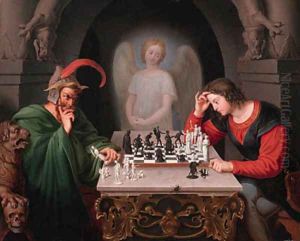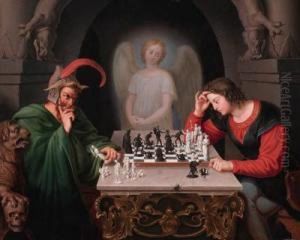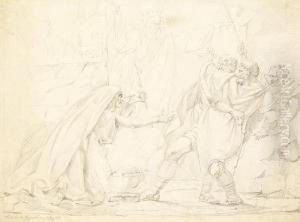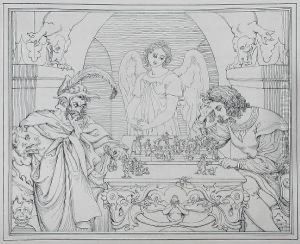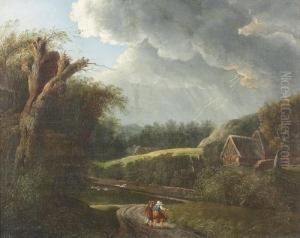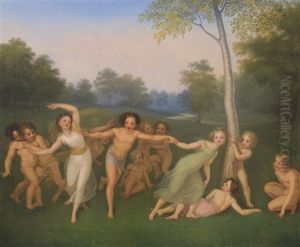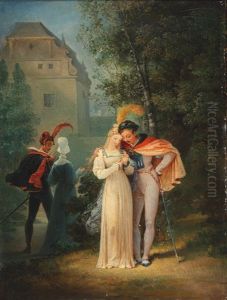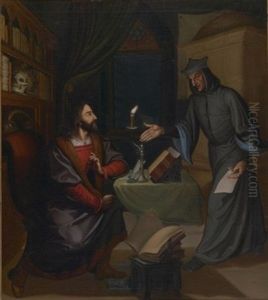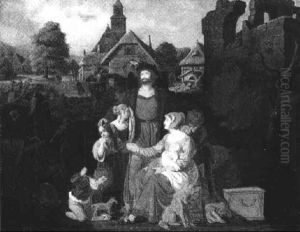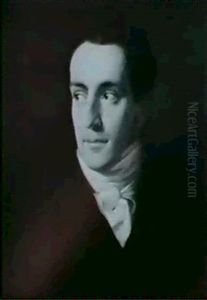Friedrich Moritz August Retzsch Paintings
Friedrich Moritz August Retzsch was a German painter, draughtsman, and etcher who gained prominence for his compositions that often depicted scenes from literature, particularly the works of William Shakespeare and Johann Wolfgang von Goethe. Born on December 9, 1779, in Dresden, Retzsch was exposed to the arts at an early age. His father was a well-respected porcelain painter, which provided the young Retzsch with an environment conducive to developing his artistic talents.
Retzsch began his education in art under the guidance of the landscape painter Johann Christian Klengel. He later attended the Dresden Academy of Fine Arts to further his studies. Rather than following the prevailing trends of the time, which often leaned towards neoclassicism, Retzsch found his niche in a more romantic style, influenced by his fascination with literature and the human psyche.
Retzsch's most famous series, 'Outlines to Shakespeare's Dramas' (Umrisse zu Shakespeares Dramen), was published beginning in 1828. These works were characterized by their use of contour lines and lack of shading, which allowed for the dramatic expression of the narratives and characters of Shakespeare's plays. His 'Outlines' series was well-received and contributed significantly to his international reputation, particularly in the English-speaking world, where Shakespeare's works were held in high regard.
Aside from his Shakespearean illustrations, Retzsch's portfolio includes a similar treatment of Goethe's 'Faust,' which also became quite popular. These illustrations showcased Retzsch's ability to capture the essence of complex literary works in a single frame, a skill that made him stand out among his contemporaries.
Throughout his career, Retzsch also taught at the Dresden Academy, sharing his knowledge and skills with the next generation of artists. His influence extended beyond his own artistic contributions, as he helped to shape the talents of others.
Friedrich Moritz August Retzsch passed away on June 11, 1857, in his home city of Dresden. His work continues to be appreciated for its unique blend of romanticism and literary interpretation, as well as for its technical precision and its capacity to communicate the emotional depth of the narratives it represents.
